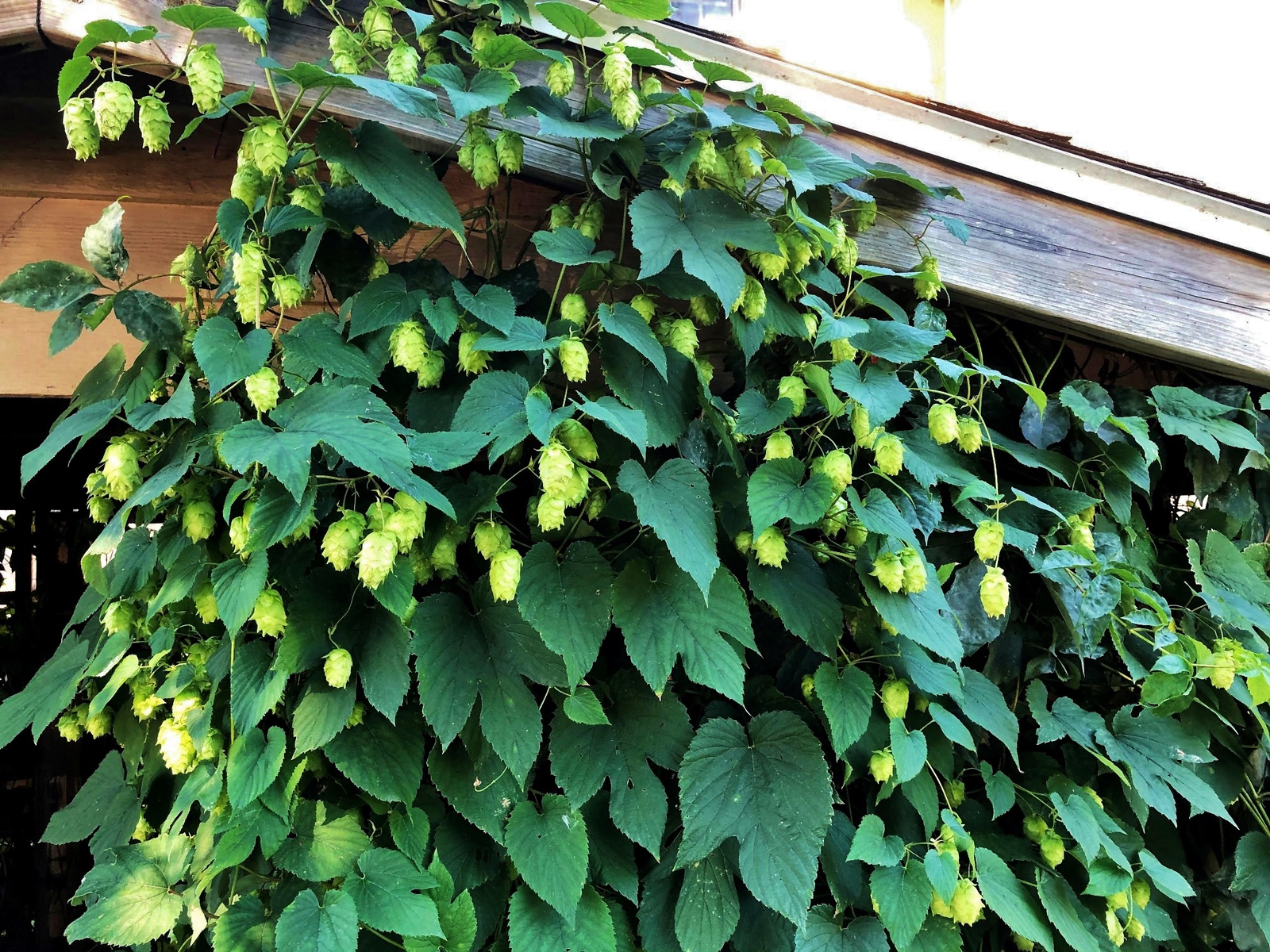Back Home by Chris Hardie
» Download this column as a Word document
» Download the photo that accompanies this story
» Chris Hardie’s headshot
In a profession full of uncertainties there is one thing we can rely on in farming. Farmers will find a way to over-produce any commodity.
That’s not an insult but rather a testament to the ability of our farmers to grow any crop, animal or agricultural byproduct — and to do it well. If there’s a demand, there will be supply. Farmers are always looking for opportunities to maximize land use.
Sometimes we can look to the past for possible answers to the future. Recently there has been renewed interest in hemp, a crop from the past. Another crop with a history in Wisconsin is hops.

Hops provide aroma and bittering characteristics in beer, but they can also be used as animal feed. Outside our back door, we have a hop plant that sprawls across a pergola. My wife, Sherry, planted it a few years ago; it comes back every year. This year, there seems to be a bumper crop of the cones.
Wisconsin had a brief run in the 1860s as the king of beer hops when blight devastated crops on the East Coast and particularly in New York. Wisconsin went from producing 135,000 pounds of hops in 1860 to more than 11 million pounds in 1867.
The money flowed in for a few years. But when the crop came back strong in New York, prices decreased and production slipped. Wisconsin turned more to dairy and the hop craze soon ended.
The Pacific Northwest became the center of American hops production. I witnessed that in person in 2000 when I saw acres and acres of hops fields in the far-northern part of Idaho, grown for major breweries.
But the recent growth of craft breweries has brought a new interest to expanding hop production. Researchers at Pennsylvania State University and the University of Toledo recently published findings that said there are 29 states where hops are produced. From 2007 to 2017, the number of hop farms grew from 68 to 817. Hop acreage expanded from 31,145 to 59,429 acres.
I remember my father attending a conference about 15 years ago where presenters discussed the potential for hop production in Wisconsin. But it required much manual labor. Hop plants grow to 18 to 25 feet; they need to be trellised with poles and wires. Dad was intrigued, but the amount of labor and investment were too much to tempt him.
I’m a winemaker, but I also appreciate the flavors and varieties of beer. Hops play an important role in that flavor — with as little as 8 ounces used in a barrel of beer.
Too much appreciation of beer can be discernible in the belly; they don’t call it a beer belly for nothing. And scientists with the U.S. Department of Agriculture’s Agricultural Research Service recently discovered that hops have the same effect on cattle — helping them gain weight.
“On the right diet, adding hops to feed can help cattle gain weight,” said microbiologist Michael Flythe with the Agricultural Research Service in Lexington, Kentucky. “This would reduce the amount of feed required and decrease expenses for producers.”
He found the cones of the hops plant are rich in bitter acids that act as natural antibiotics. One of his research assistants pointed out to him that cows also experienced a bump in weight. The bitter acids in hops help control gut bacteria that break down protein in the rumen — the first of the cow’s four stomach chambers. The un-degraded protein is digested rather than going out in urine.
But it can be too much of a good thing for cows as well. The bitter acids also kill beneficial bacteria in cow stomachs, making it more difficult for them to break down fiber. The best use of hops is in a finishing ration.
Using excess hops to feed cattle sounds like a good way to keep the supply of the crop closer to demand. There was a beer-industry shortage of hops a few years ago, but production this year is expected to be at an all-time record amount.
Meanwhile I think our hops look like they’re ready to harvest. How about a hop-infused wine?
Chris Hardie spent more than 30 years as a reporter, editor


